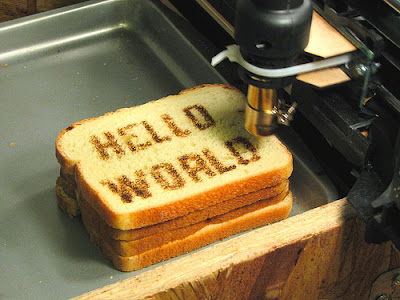After reading the
Slow Design manifesto, I find that my work is naturally gravitating towards adopting the philosophical approach to making as it is described. I have paraphrased the theory in addition to quoting several passages in an effort to remind myself to slow down in my own making and apply these most important ideas to make my work more sustainable over the long haul.
Slow Design’s 52 page ‘Slow Theory’ begins by defining the crisis in contemporary design. Concern with design’s complacency with corporate politics, globalization and a lack of attention to environmental issues sparks Slow Design’s question: “Can design rise to the challenge or is it a victim of its own success in its service to industry, consumerism…?” Slow Design encourages the design world that is enabling our rampant consumption as a society to change and slow down with the following question: “How can design deliver more sustainable patterns of production and consumption together with improvements in quality of life?”
The current beginnings of a movement towards sustainable and green-design are discussed as a marginalized aspect of contemporary design. Slow Design states that in order for this shift to slowing of design, there needs to be a larger social shift. Organizations they recommend looking at that are already subscribing to Slow Design values:
Droog,
Doors of Perception,
o2.
In the Slow Design definition of today’s design paradigm, design is controlled by manufacture. Current design contributes to the kind of production that requires product replacement. Due to a high flow of production, short-term goals and corporate desire for growth things produced and designed now are meant to be short-lived products that do not stand the test of time—computers are a great example. “Since design is wed to both technology and economy, then design has also contributed to a perceived speeding up of our lives.” Design enables mass-production and fast turn around of new trends; this encourages consumption out of desire, not need or well-being. This in turn creates post-consumer waste and puts large demands on resources.
Slow Design asks: ”How does design respond to eco-economy challenges? How can it balance the global and the local? Will design contribute towards more sustainable ways of living, working, playing?”
“Slow Design was conceived as means to refocus an anthropocentric (individual+socio-cultural community) and environmental well-being. It is seen as a counterbalance to the existing paradigm of ‘fast design.’ It is about transforming our current materialistic and consumer vision of the world.”
“The guiding philosophical principle of slow design is to reposition the focus of design and the individual, socio-cultural and environmental well-being. Slow Design encourages those engaged in design to take a long view; envisage slower rates of consumption and production; stimulate a renewed joy in design…focus on the present rather than trying to design the future.”
Pages 18 and 39 were particularly interesting to me and I find that they clearly sum up the Slow Design Theory. I won’t include them here as I do respect their copyright on the information, but please visit their website here to download the pdf document to read all about Slow Design on your own.
In support of Slow Design I am pledging to do my best regarding the following:
1. I will set parameters in my studio practice and making of ceramic work to encourage slowness
2. Make work to satisfy real needs rather than satisfy trends
3. Minimize my ecological footprint by reducing the amount of resources I use to make my work and sell it.
4. Harness and use renewable energy sources
5. Choose to use materials in packaging etc. that can be most easily recycled or reused
6. Consider all aspects of well-being for the people using my products
7. Inform clients of the philosophy I am subscribing to in an effort to encourage education and further sustainable action
8. Avoid complacency in the design of my products through consistent re-evaluation and improvement
9. Encourage modularity

 Portia Wells (top images) and Mark Cutler (bottom images) are both working with a lovely sense of 2D and 3D in combination. The flatness of the drawings on the fabric lend themselves to the modernist or even minimalist forms beneath. I really enjoy the conflation of modernist and decorative aesthetics.
Portia Wells (top images) and Mark Cutler (bottom images) are both working with a lovely sense of 2D and 3D in combination. The flatness of the drawings on the fabric lend themselves to the modernist or even minimalist forms beneath. I really enjoy the conflation of modernist and decorative aesthetics.





























